A Three-Dimensional Radiation Transfer Model to Evaluate Performance of Compound Parabolic Concentrator-Based Photovoltaic Systems
Abstract
:1. Introduction
2. Optical and Photovoltaic Conversion Efficiency of CPVs
2.1. Equation of Reflectors of CPC-θa/θe
2.2. Coordinate System to Determine the Vector of Solar Rays
2.3. Photovoltaic Conversion Efficiency of Solar Cells
2.4. Optical and Photovoltaic Conversion Efficiency of CPVs
2.4.1. Calculation of f1 and η1
2.4.2. Calculation of f2 and η2
2.4.3. Calculation of f3 and η3
2.4.4. Calculation of f4 and η4
2.4.5. Calculation of and
2.4.6. Calculation of and
3. Annual Optical and Photovoltaic Performance of CPVs
4. Numerical Approach
5. Results and Discussions
5.1. Annual Collectible Radiation
5.2. Annual Photovoltaic Performance of CPVs
6. Conclusions
Acknowledgments
Author Contributions
Conflicts of Interest
Glossary
| Ct | geometric concentration of truncated CPVs (dimensionless) |
| Cpv | annual power output increase factor of CPVs as compared to similar non-concentrating PV panel (dimensionless) |
| optical efficiency factor of CPVs (dimensionless) | |
| H | daily radiation (J/m2) |
| ht | height of CPVs (m) |
| I | instantaneous radiation intensity (W/m2) |
| Vector of solar rays incident on point M of reflectors; | |
| Vector of the normal to reflectors at point M | |
| Incident solar vector | |
| reflective solar vector from point M of reflectors | |
| Pa | annual power output from CPVs (MJ/m2) |
| Pa,0 | annual power output from similar PV panel without using CPCs (MJ/m2) |
| Sa | annual radiation collected by CPVs (MJ/m2) |
| t | solar time (s) |
Greek Letters
| tilt-angle of CPVs’ aperture from the horizon (rad.) | |
| declination of the Sun (rad.) | |
| polar angle of point M on parabolic reflectors (rad.) | |
| photovoltaic conversion efficiency of CPVs (dimensionless) | |
| photovoltaic conversion efficiency of solar cells as the function of (dimensionless) | |
| tilt-angle of any line relative to x-axis (rad.) | |
| site latitude (rad.) | |
| acceptance half-angle of CPCs (rad.) | |
| maximum exit angle of CPC-/ for radiation over its acceptance angle (rad.) | |
| solar incident angle on the aperture of CPVs (rad.) | |
| solar incident angle on solar cells of CPVs (rad.) | |
| solar incident angle at point M of reflectors (rad.) | |
| solar exit angle from point M of reflectors relative to the negative x-axis (rad.) | |
| projected angle of incident solar rays on the cross-section of CPC-troughs (rad.) | |
| projected angle of solar ray reflecting from M of reflectors (rad.) | |
| edge-ray angle of truncated CPCs (rad.) | |
| reflectivity of reflectors (set to be 0.9 in this work) | |
| opening angle of V-trough formed by two plane mirrors of CPC-/ (rad.) | |
| day length (s) | |
| hour angle (rad.) |
Subscripts
| 0 | sunset |
| a | annual |
| abs | absorber of CPCs; solar cells of CPVs |
| ap | aperture |
| b | beam radiation |
| c | critical value |
| i | incident solar ray |
| r | reflective solar ray; right reflector |
| pl | plane mirror |
Appendix A
Appendix A.1. For the Case of
Appendix A.2. For the Case of <
Appendix A.3. For the Case of <
References
- Jaaz, A.H.; Hassan, H.A.; Sopian, K.; Ruslan, M.H.B.H.; Zaidi, S.H. Design and development of compound parabolic concentrating for solar collector: Review. Renew. Sustain. Energy Rev. 2017, 76, 1108–1121. [Google Scholar] [CrossRef]
- Chong, K.K.; Lau, S.L.; Yew, T.K.; Tan, P.C.L. Design and development in optics of concentrator photovoltaic system. Renew. Sustain. Energy Rev. 2013, 19, 589–612. [Google Scholar] [CrossRef]
- Royne, A.; Dey, C.R.; Mills, D.R. Cooling of photovoltaic cells under concentrated illumination: A critical review. Sol. Energy Mater. Sol. Cells 2005, 86, 451–483. [Google Scholar] [CrossRef]
- Mallick, T.K.; Eames, P.C. Design and fabrication of low concentrating second generation PRIDE concentrator. Sol. Energy Mater. Sol. Cells 2007, 91, 597–608. [Google Scholar] [CrossRef]
- Mallick, T.K.; Eames, P.C.; Hyde, T.J.; Norton, B. The design and experimental characterization of an asymmetric compound parabolic photovoltaic concentrator for building façade integration in the UK. Sol. Energy 2004, 77, 319–327. [Google Scholar] [CrossRef]
- Mallick, T.K.; Eames, P.C.; Norton, B. Non-concentrating and asymmetric compound parabolic concentrating building façade integrated photovoltaic: An experimental comparison. Sol. Energy 2006, 80, 834–849. [Google Scholar] [CrossRef]
- Brogren, M.; Wennerberg, J.; Kapper, R.; Karlsson, B. Design of concentrating elements with CIS thin-film solar cells for façade integration. Sol. Energy Mater. Sol. Cells 2003, 75, 567–575. [Google Scholar] [CrossRef]
- Yousef, M.S.; Rahman, A.K.A.; Ookawara, S. Performance investigation of low—Concentration photovoltaic systems under hot and arid conditions: Experimental and numerical results. Energy Convers. Manag. 2016, 128, 82–94. [Google Scholar] [CrossRef]
- Bahaidarah, H.M.; Gandhidasan, P.; Baloch, A.A.B.; Tanweer, B.; Mahmood, M. A comparative study on the effect of glazing and cooling for compound parabolic concentrator PV systems: Experimental and analytical investigations. Energy Convers. Manag. 2016, 129, 227–239. [Google Scholar] [CrossRef]
- Tang, R.; Wu, M.; Yu, Y.; Li, M. Optical performance of fixed east-west aligned CPCs used in China. Renew. Energy 2010, 35, 1837–1841. [Google Scholar] [CrossRef]
- Welford, W.T.; Winston, R. The Optics of Non-Imaging Concentrators; Academic Press: London, UK, 1978. [Google Scholar]
- Muhammad-Sukki, F.; Abu-Bakar, S.H.; Ramirez-Iniguez, R.; McMeekin, S.G.; Stewart, B.G.; Munir, A.B.; Yasin, S.H.M.; Rahim, R.A. Performance analysis of a mirror symmetrical dielectric totally internally reflecting concentrator for building integrated photovoltaic systems. Appl. Energy 2013, 111, 288–299. [Google Scholar] [CrossRef]
- Tang, R.; Wang, J. A note on multiple reflections of radiation within CPCs and its effect on calculations of energy collection. Renew. Energy 2013, 57, 490–496. [Google Scholar] [CrossRef]
- Su, Y.; Pei, G.; Saffa, B.; Riffat, S.B.; Huang, H. A novel lens-walled compound parabolic concentrator for photovoltaic applications. J. Sol. Energy Eng. 2012, 134, 021010. [Google Scholar] [CrossRef]
- Li, G.; Pei, G.; Su, Y.; Ji, J.; Saffa, B.; Riffat, S.B. Experiment and simulation study on the flux distribution of lens-walled compound parabolic concentrator compared with mirror compound parabolic concentrator. Energy 2013, 58, 398–403. [Google Scholar]
- Hatwaambo, S.; Hakansson, H.; Nilsson, J.; Karlsson, B. Angular characterization of low concentrating PV-CPC using low-cost reflectors. Sol. Energy Mater. Sol. Cells 2008, 92, 1347–1351. [Google Scholar] [CrossRef]
- Hatwaambo, S.; Hakansson, H.; Roos, A.; Karlsson, B. Mitigating the non-uniform illumination in low concentrating CPCs using structured reflectors. Sol. Energy Mater. Sol. Cells 2009, 93, 2020–2024. [Google Scholar] [CrossRef]
- Tang, F.; Li, G.; Tang, R. Design and optical performance of CPC based compound plane concentrators. Renew. Energy 2016, 95, 140–151. [Google Scholar] [CrossRef]
- Hein, M.; Dimroth, F.; Siefer, G.; Bett, A.W. Characterisation of a 300× photovoltaic concentrator system with one-axis tracking. Sol. Energy Mater. Sol. Cells 2003, 75, 277–283. [Google Scholar] [CrossRef]
- Green, M.A. Silicon Solar Cells: Advanced Principles & Practice: Centre for Photovoltaic Devices and Systems; University of New South Wales: Kensington, Australia, 1995. [Google Scholar]
- Brogren, M.; Nostell, P.E.R.; Karlsson, B. Optical efficiency of a PV—Thermal hybrid CPC module for high latitudes. Sol. Energy 2001, 69, 173–185. [Google Scholar] [CrossRef]
- Othman, M.Y.H.; Yatim, B.; Sopian, K.; Abu Bakar, M.N. Performance analysis of a double-pass photovoltaic/thermal (PV/T) solar collector with CPC and fins. Renew. Energy 2005, 30, 2005–2017. [Google Scholar] [CrossRef]
- Elsafi, A.M.; Gandhidasan, P. Comparative study of double-pass flat and compound parabolic concentrated photovoltaic–thermal systems with and without fins. Energy Convers. Manag. 2015, 98, 59–68. [Google Scholar] [CrossRef]
- Baig, H.; Siviter, J.; Li, W.; Paul, M.C.; Montecucco, A.; Rolley, M.H.; Sweet, T.K.N.; Gao, M.; Mullen, P.A.; Fernandez, E.F.; et al. Conceptual design and performance evaluate of a hybrid concentrating photovoltaic system in preparation for energy. Energy 2018, 147, 547–560. [Google Scholar] [CrossRef]
- Yu, Y.; Liu, N.; Tang, R. Optical performance of CPCs for concentrating solar radiation on flat receivers with a restricted incidence angle. Renew. Energy 2014, 62, 679–688. [Google Scholar] [CrossRef]
- Rabl, A.; Winston, R. Ideal concentration for finite sources and restricted exit angle. Appl. Opt. 1976, 15, 2880–2883. [Google Scholar] [CrossRef] [PubMed]
- Yu, M.; Yu, Y.; Tang, R. Angular distribution of annual collectible radiation on solar cells of CPC based photovoltaic systems. Sol. Energy 2016, 135, 827–839. [Google Scholar] [CrossRef]
- Yu, Y.; Liu, N.; Li, G.; Tang, R. Performance comparison of CPCs with and without exit angle restriction for concentrating radiation on solar cells. Appl. Energy 2015, 155, 284–293. [Google Scholar] [CrossRef]
- Rabl, A. Comparison of solar concentrators. Sol. Energy 1976, 19, 93–111. [Google Scholar] [CrossRef]
- Duffie, J.A.; Beckman, J.A. Solar Engineering of Thermal Processes, 2nd ed.; John Willey & Sons, Inc.: New York, NY, USA, 1991. [Google Scholar]
- Rabl, A. Active Solar Collectors and Their Applications; Oxford University Press: Oxford, UK, 1985. [Google Scholar]
- Li, Z.; Liu, X.; Tang, R. Optical performance of inclined south-north single-axis tracked solar panels. Energy 2010, 35, 2511–2516. [Google Scholar] [CrossRef]
- Li, W.; Pau, M.C.; Sellami, N.; Sweet, T.; Montecucco, A.; Siviter, J.; Baig, H. Six-parameter electrical model for photovoltaic cell/module with compound concentrator. Sol. Energy 2016, 137, 551–563. [Google Scholar] [CrossRef]
- Chen, Z.Y. The Climatic Summarization of Yunnan; Weather Publishing House: Beijing, China, 2001. [Google Scholar]
- Collares-Pereira, M.; Rabl, A. The average distribution of solar radiation: Correlations between diffuse and hemispherical and between hourly and daily insolation values. Sol. Energy 1979, 22, 155–164. [Google Scholar] [CrossRef]
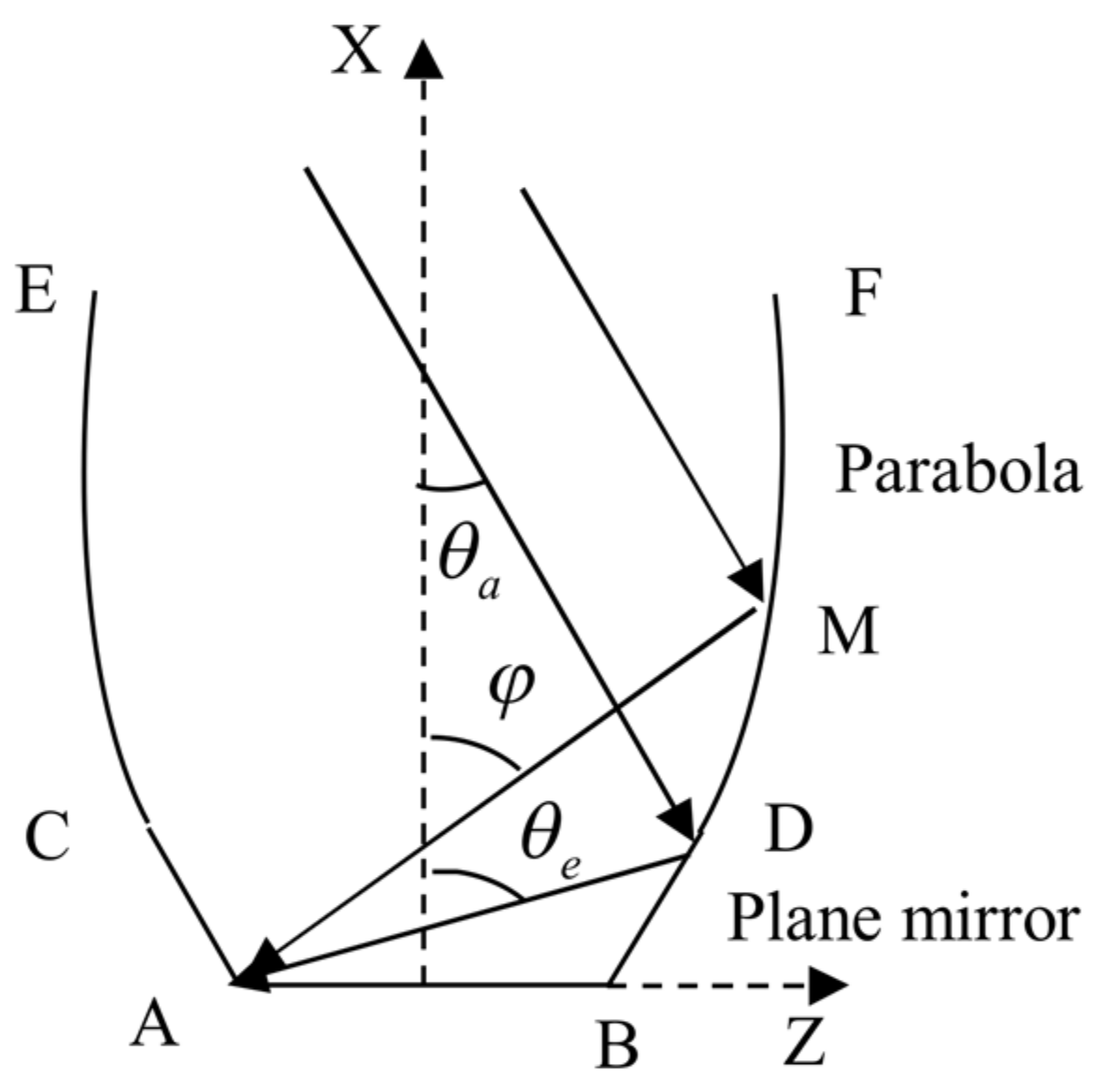
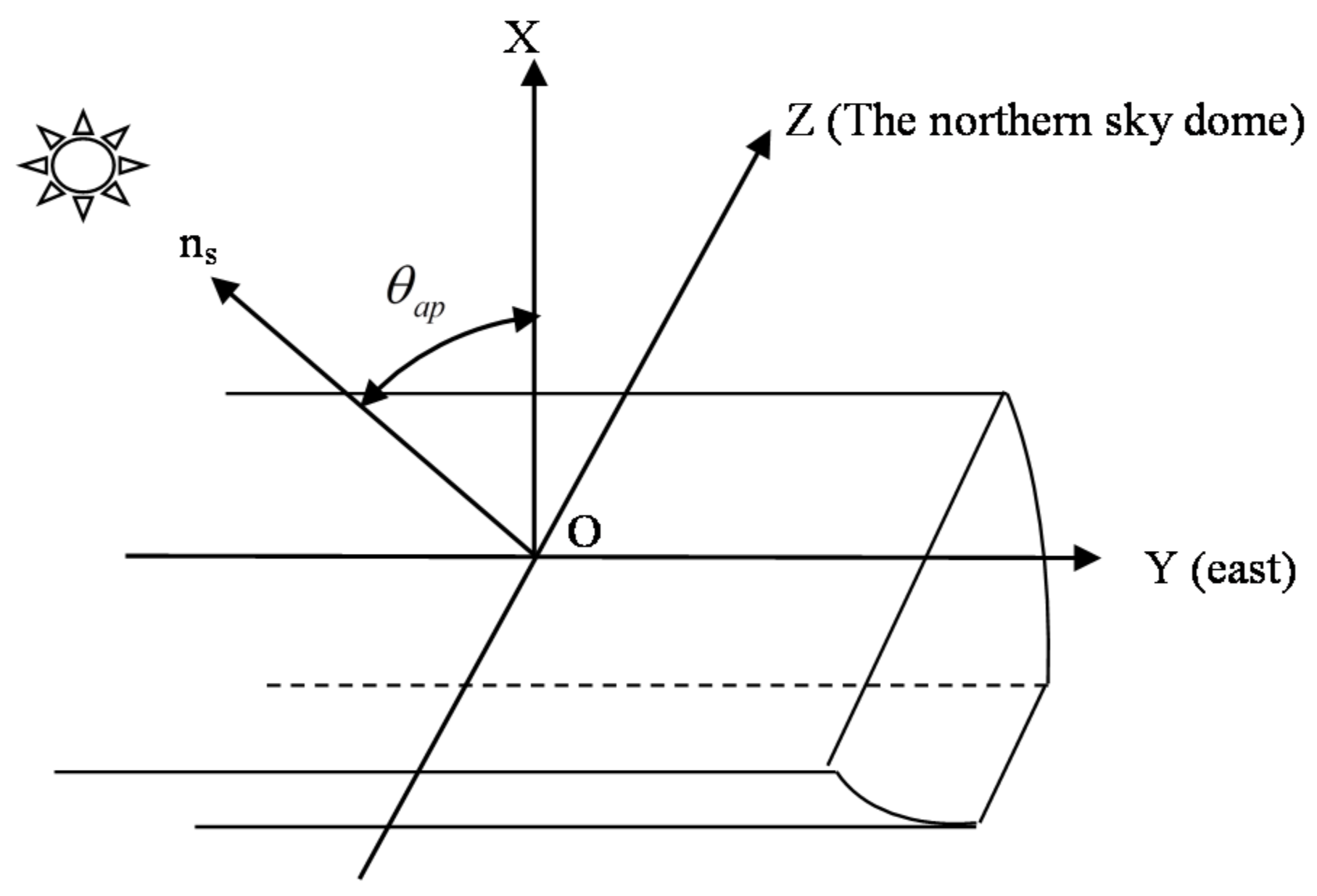
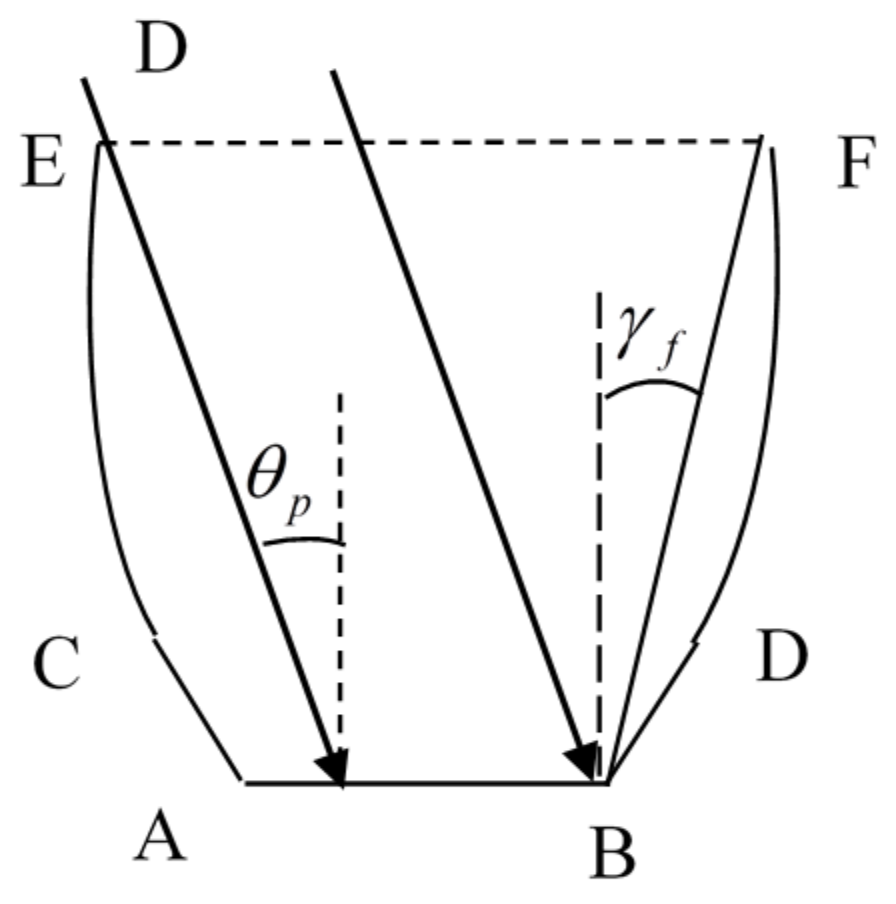
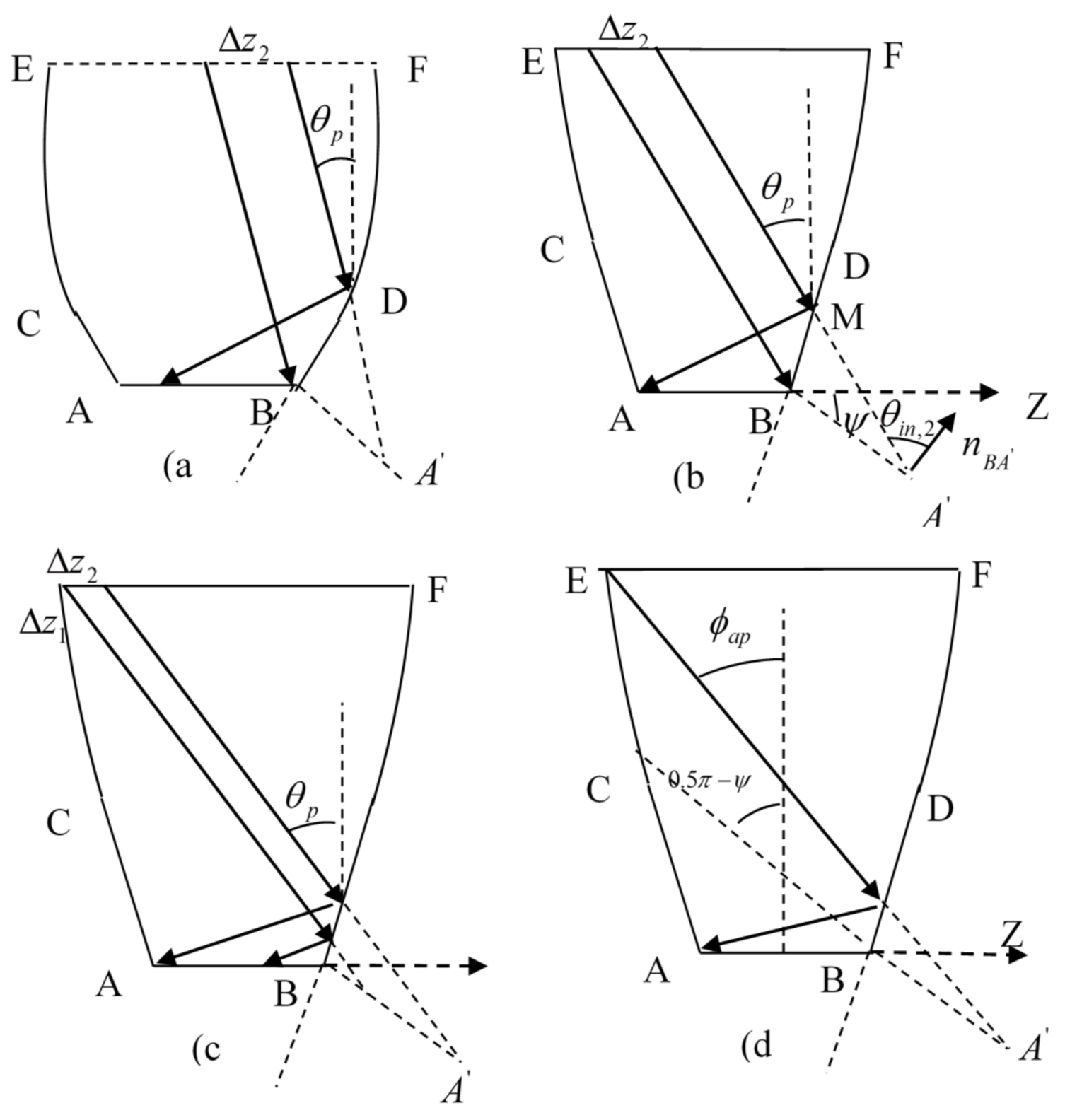
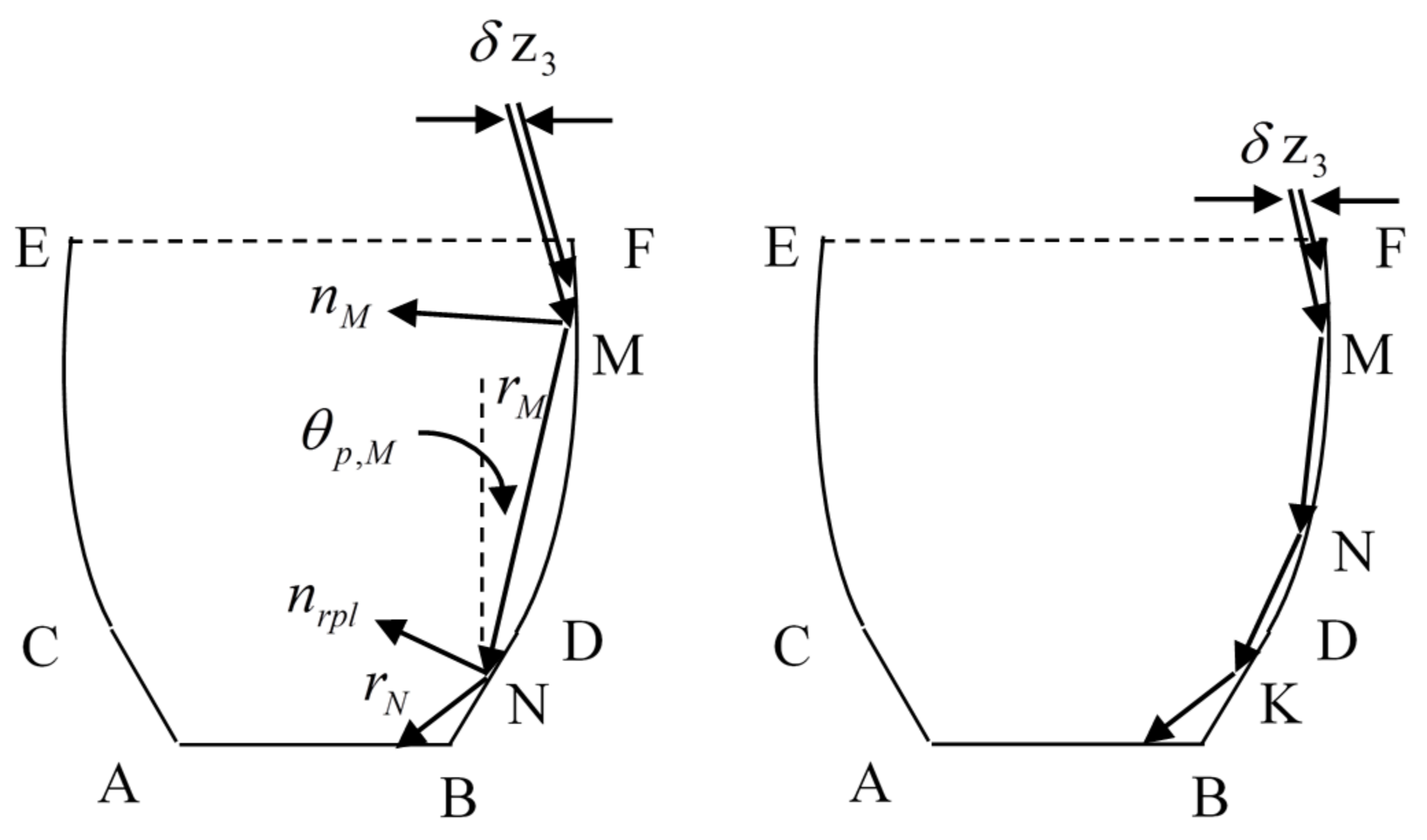
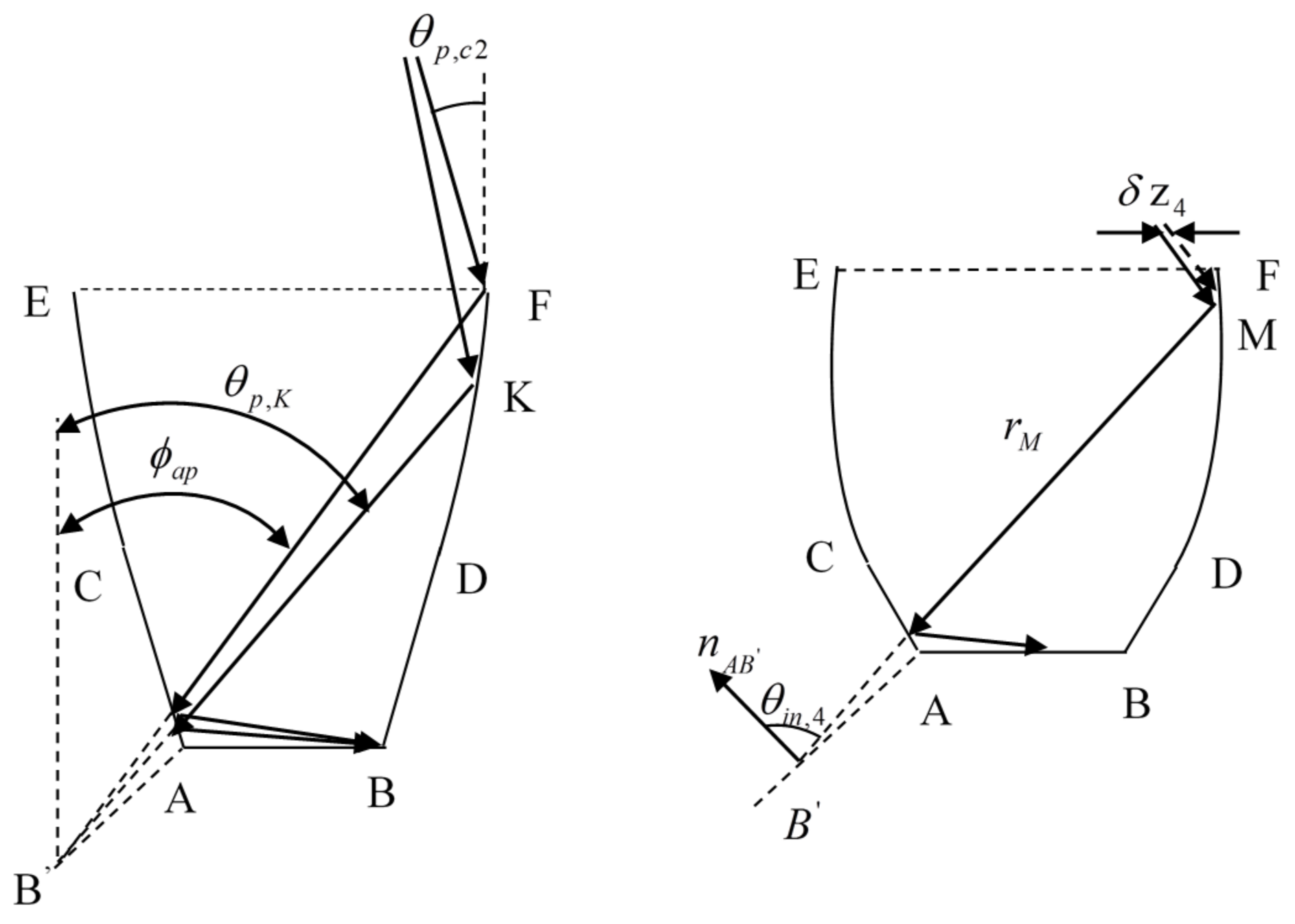
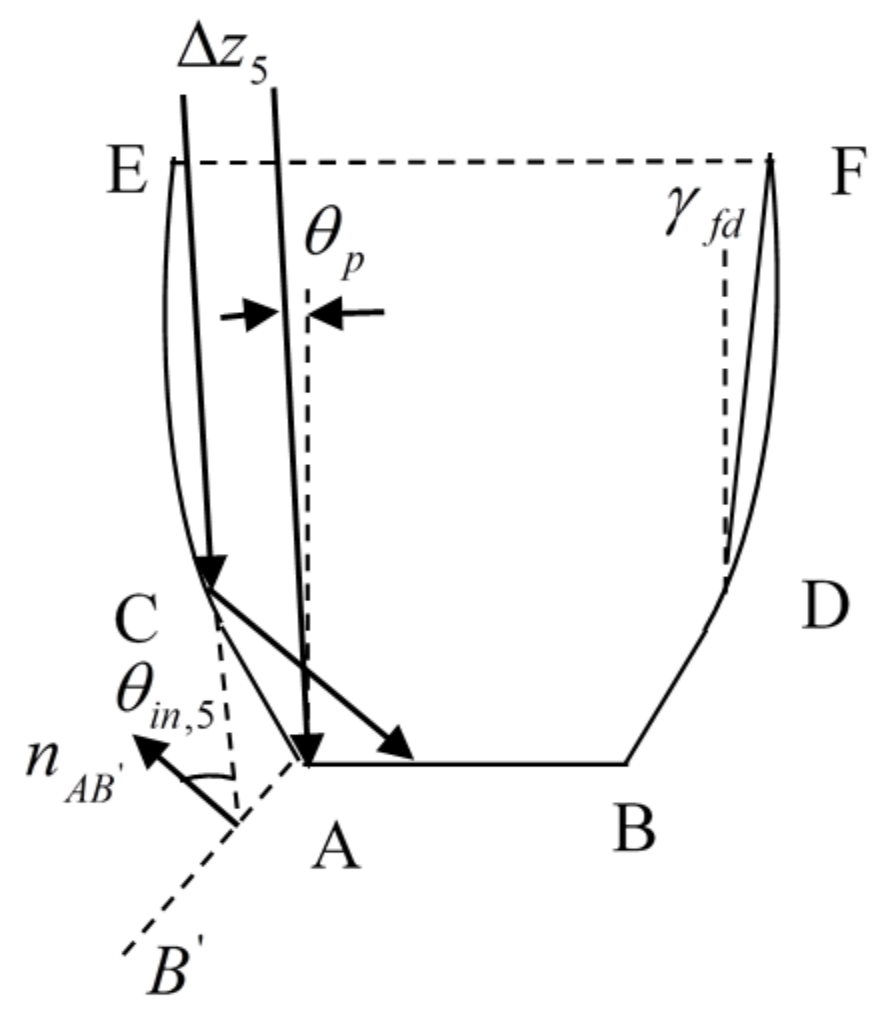
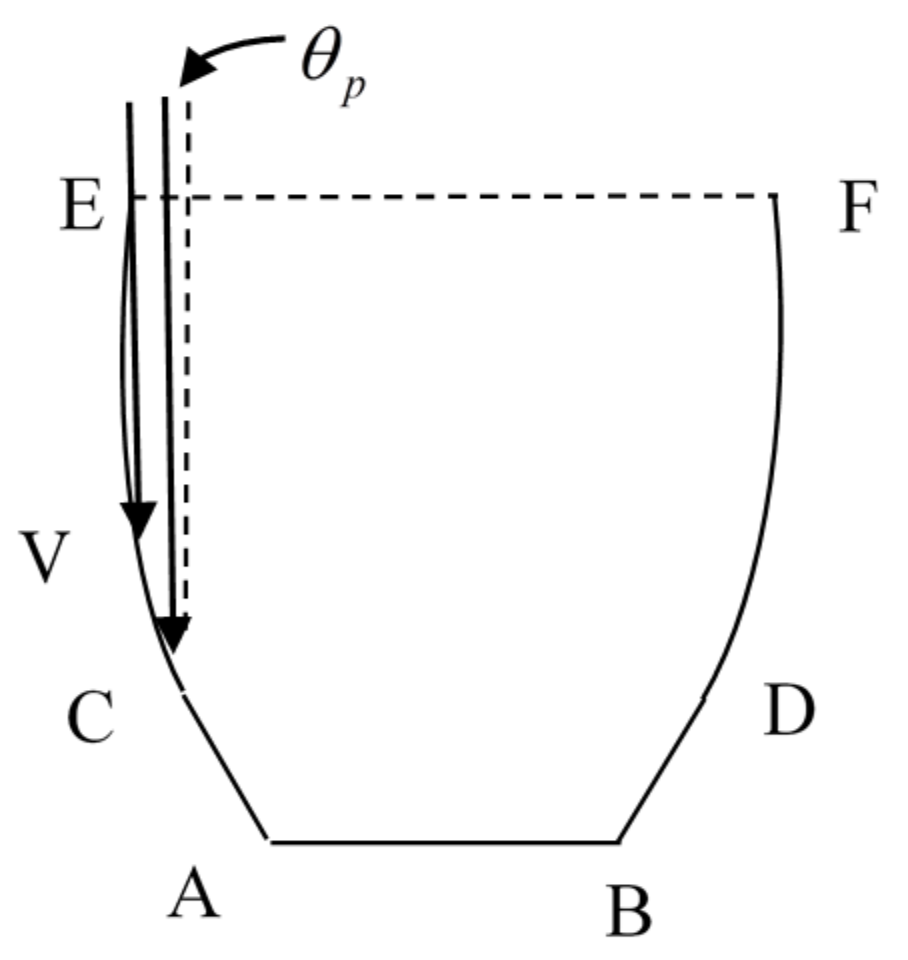
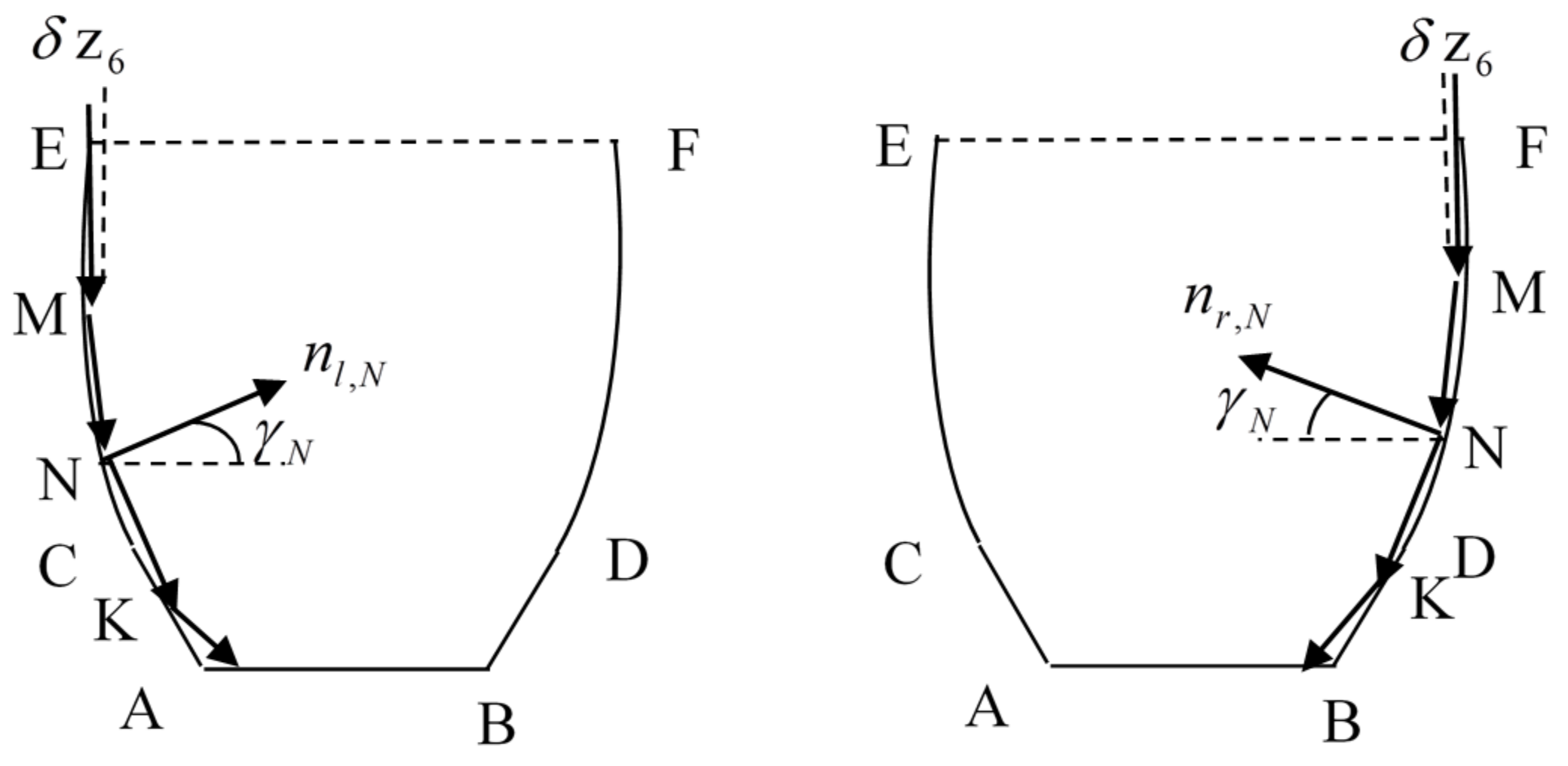
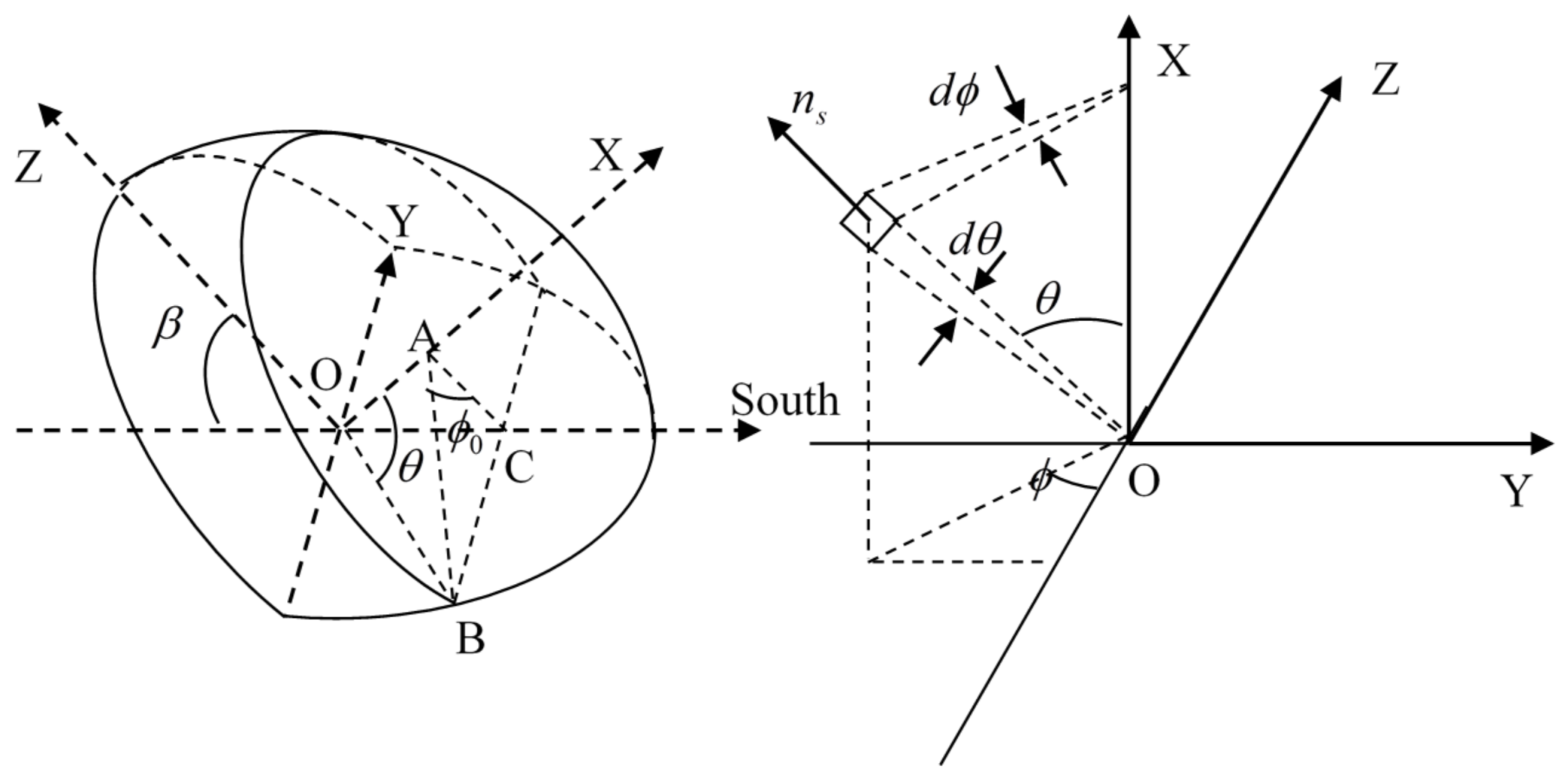
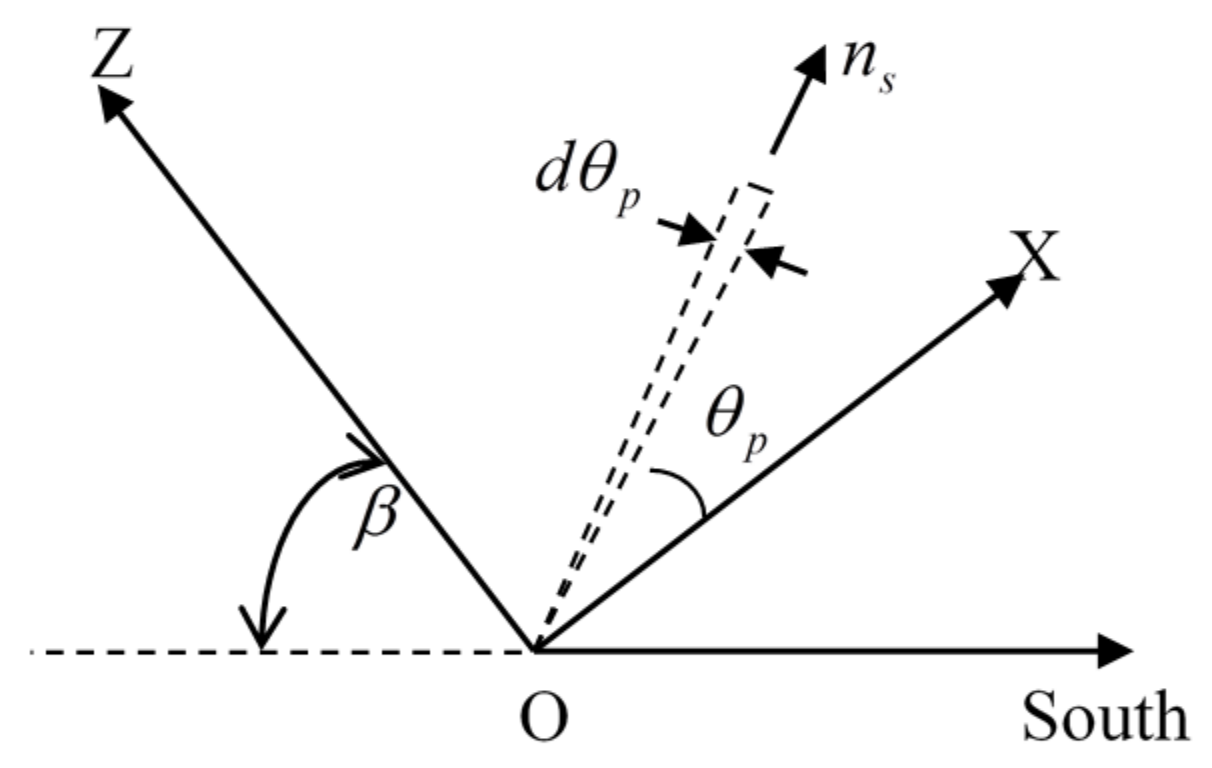
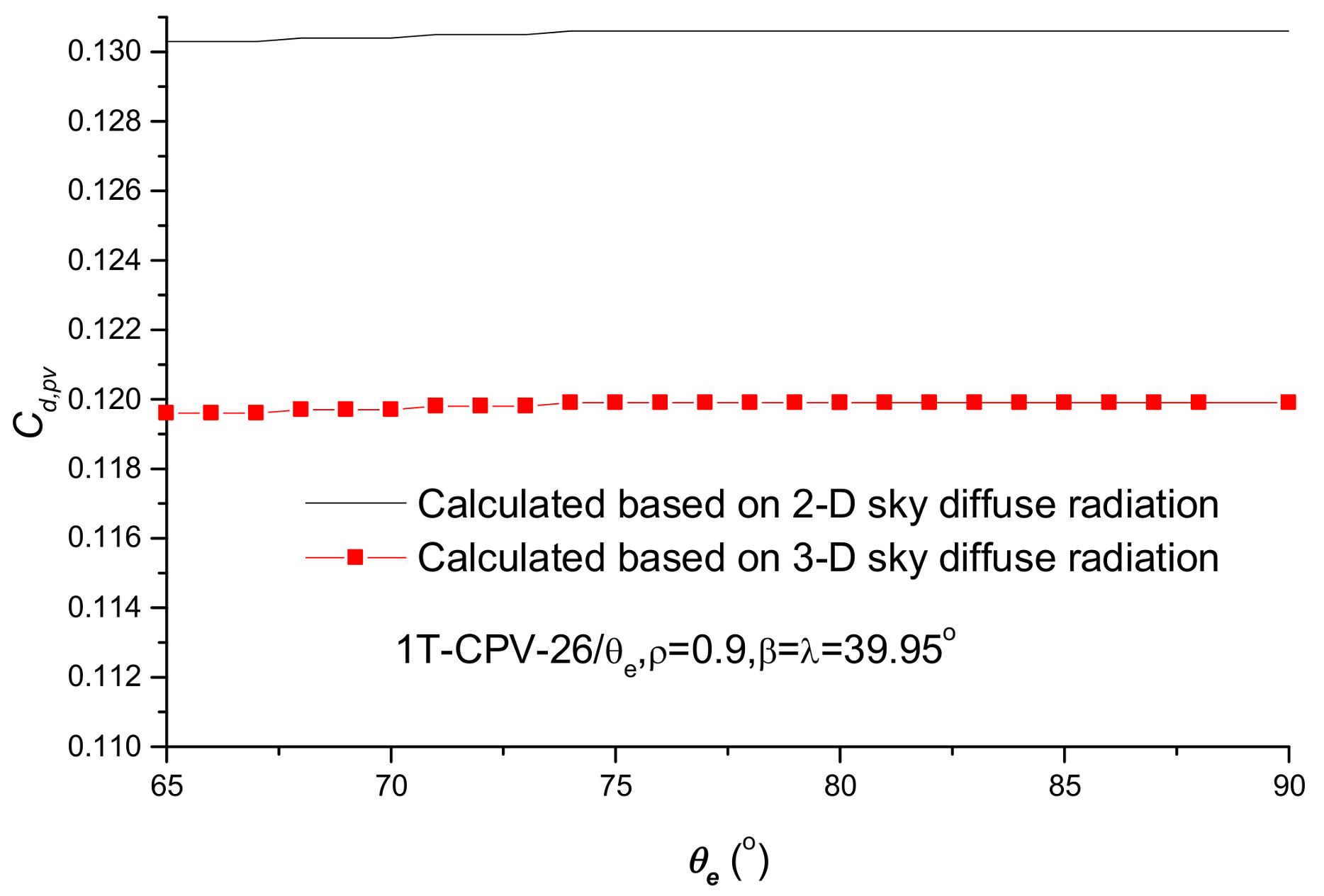
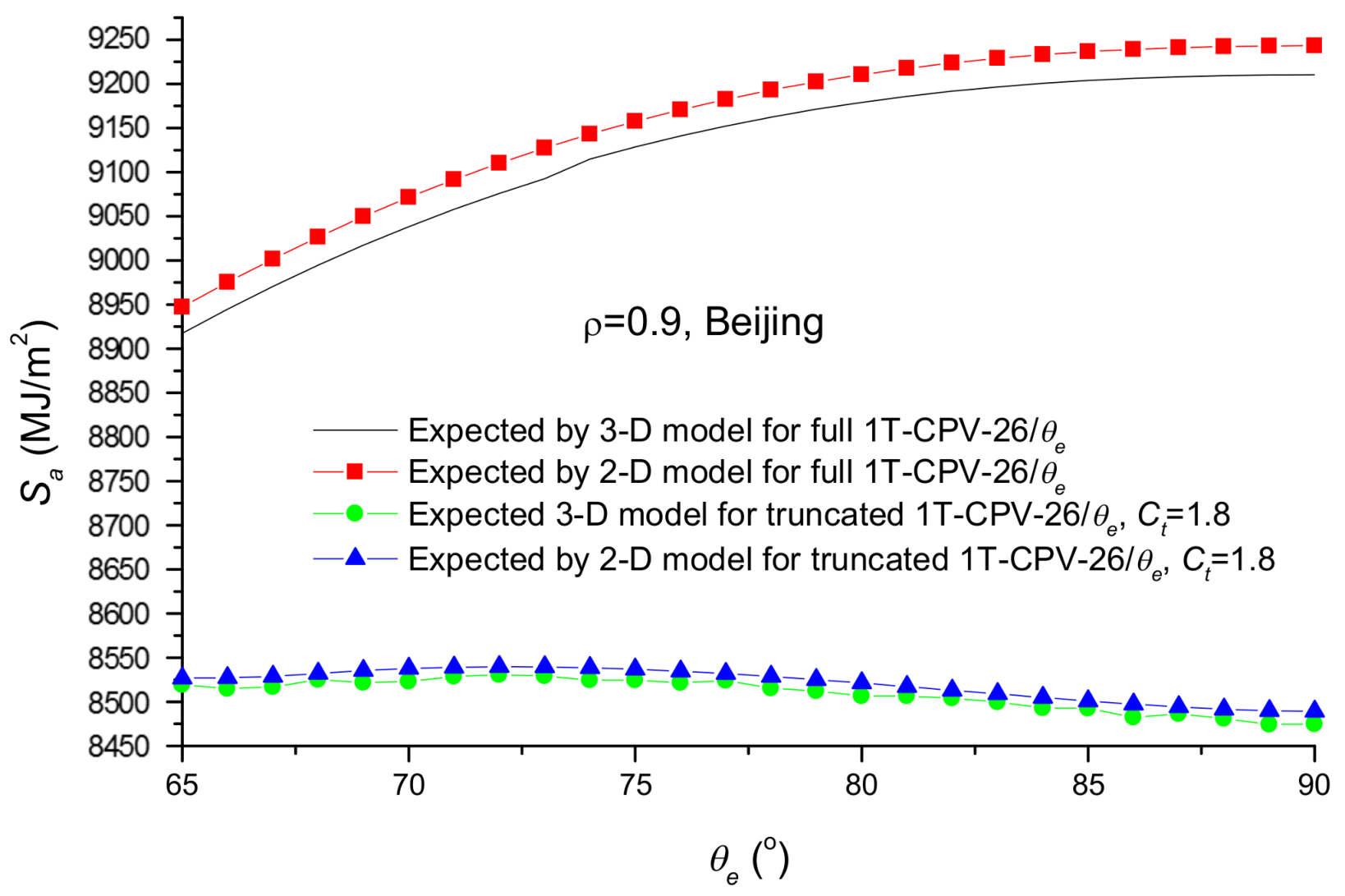
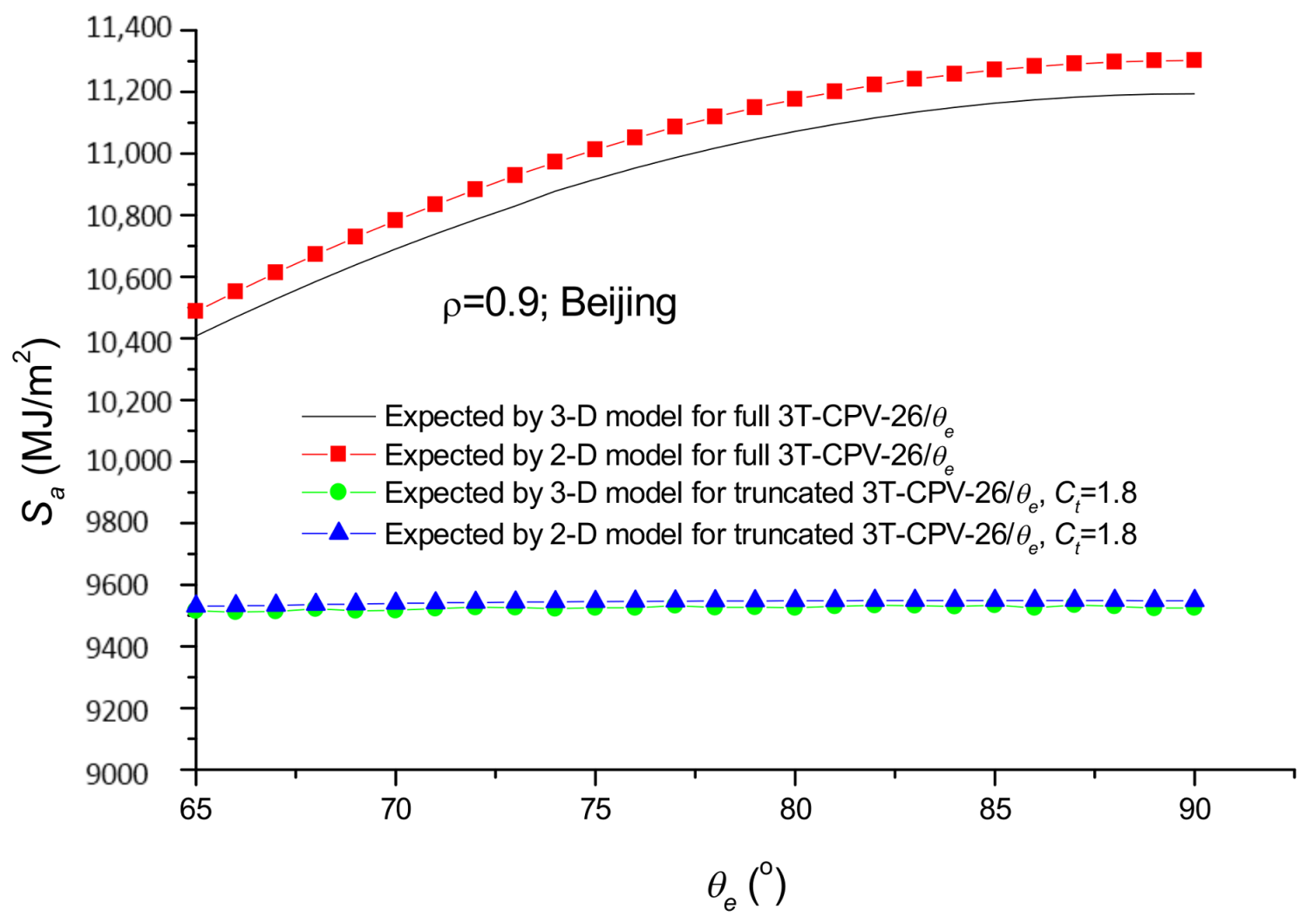
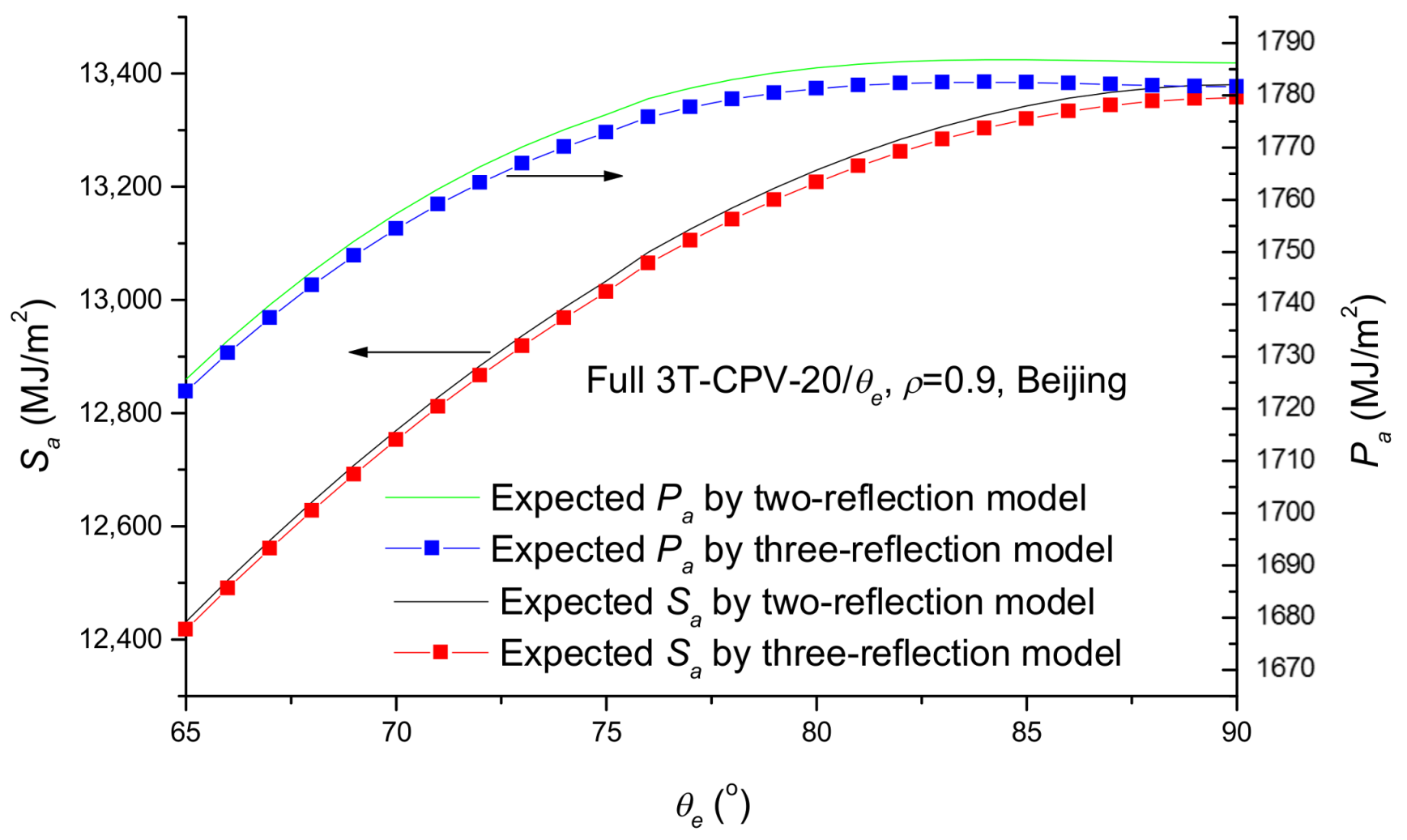
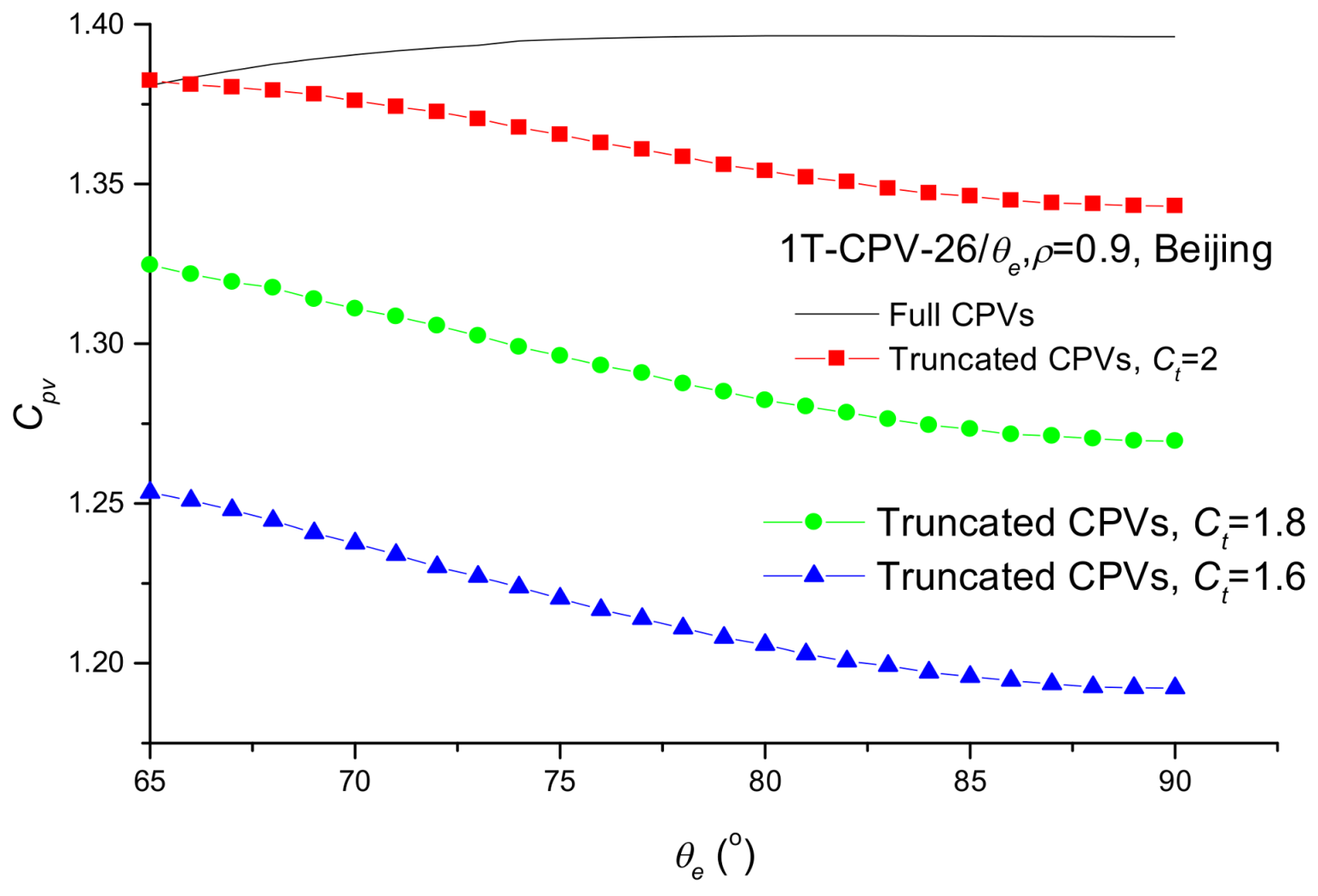
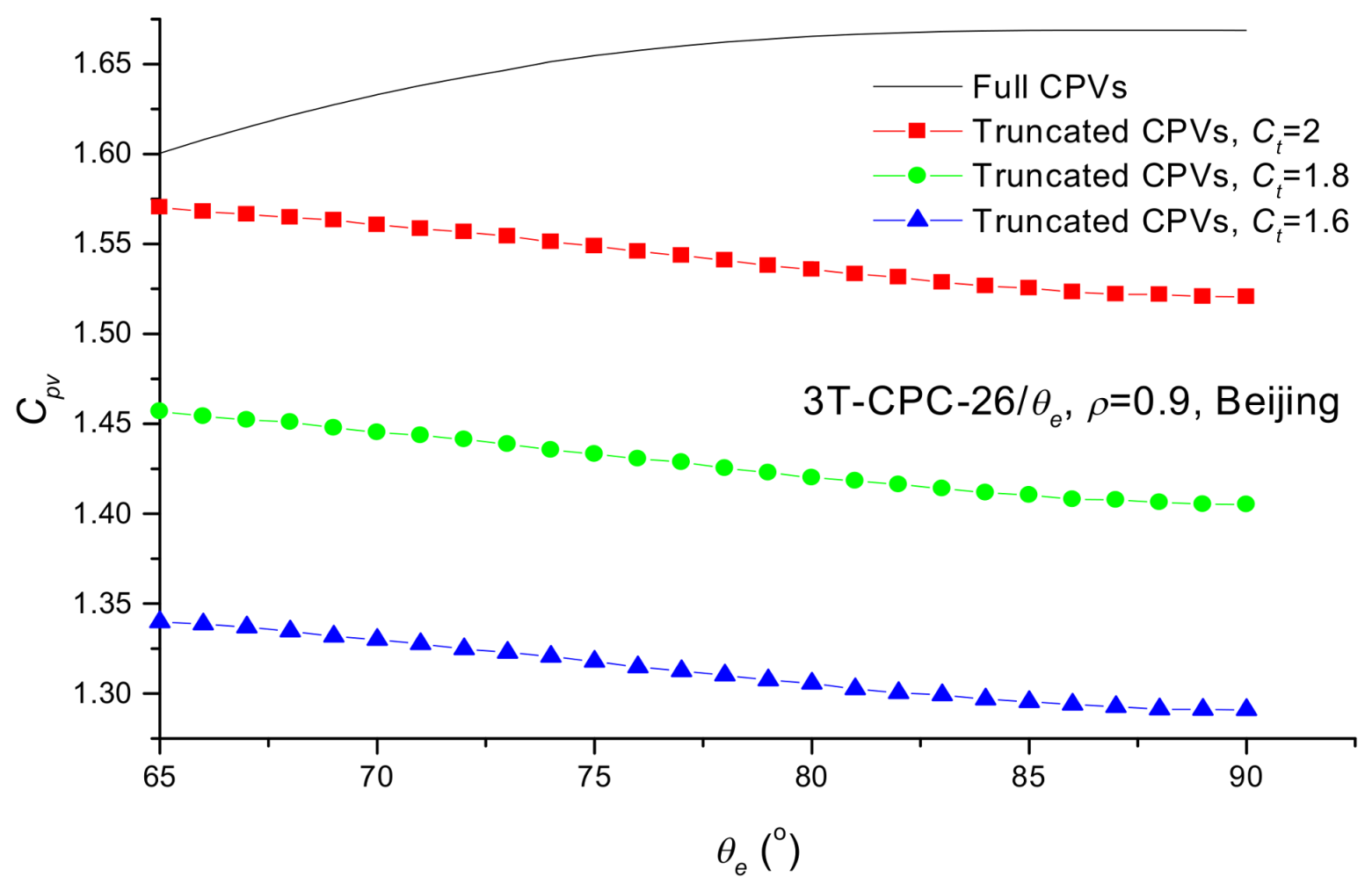
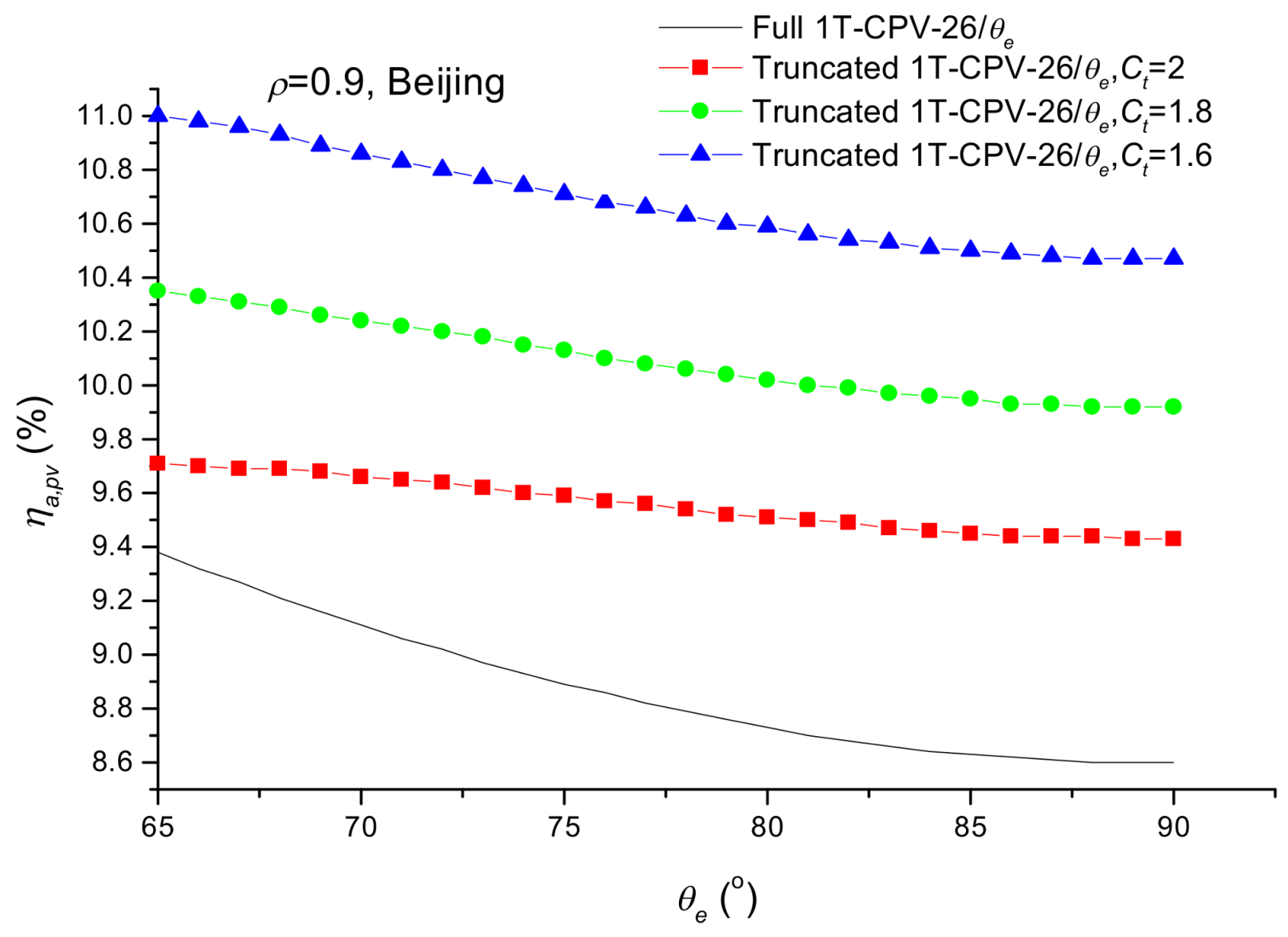
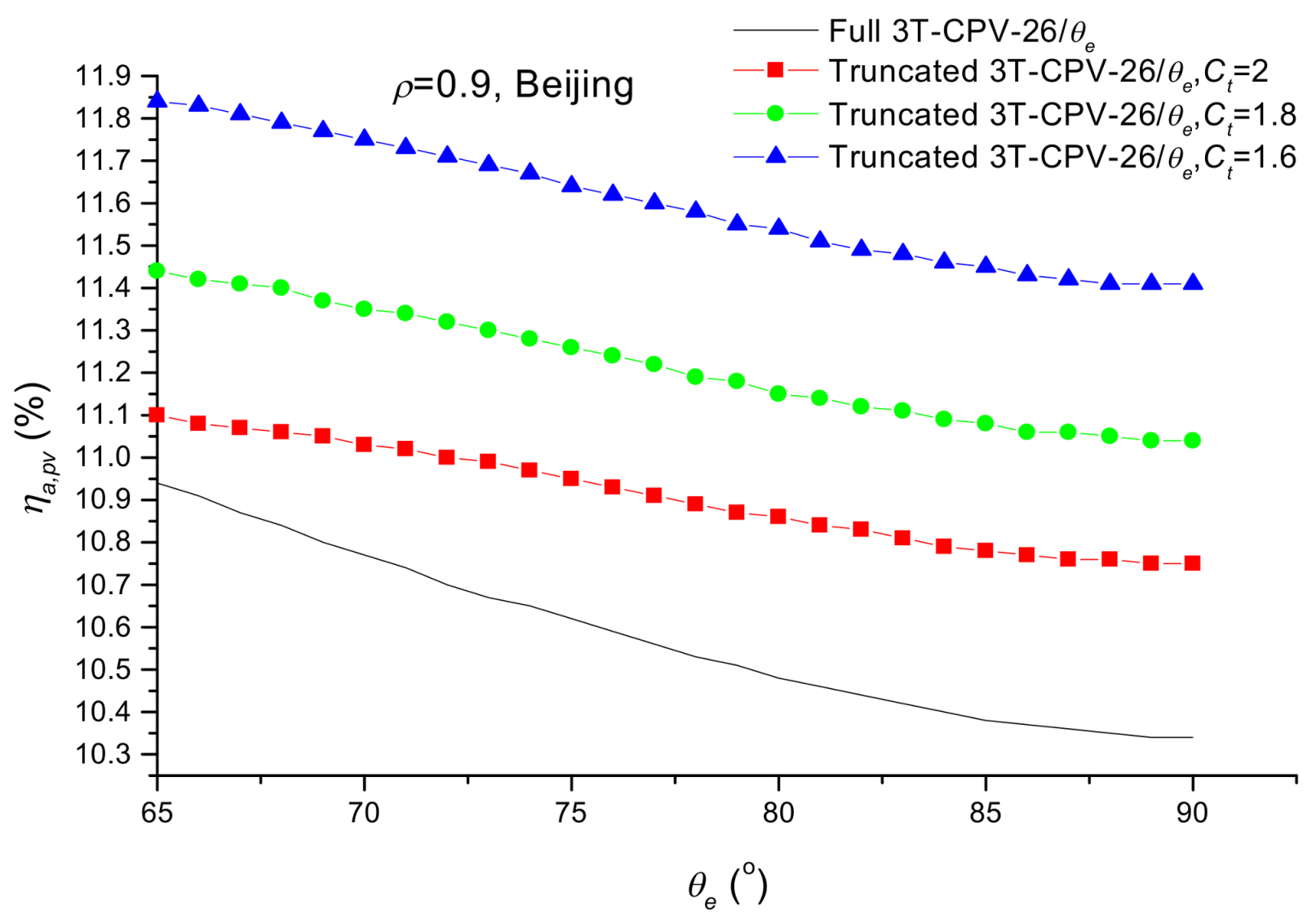
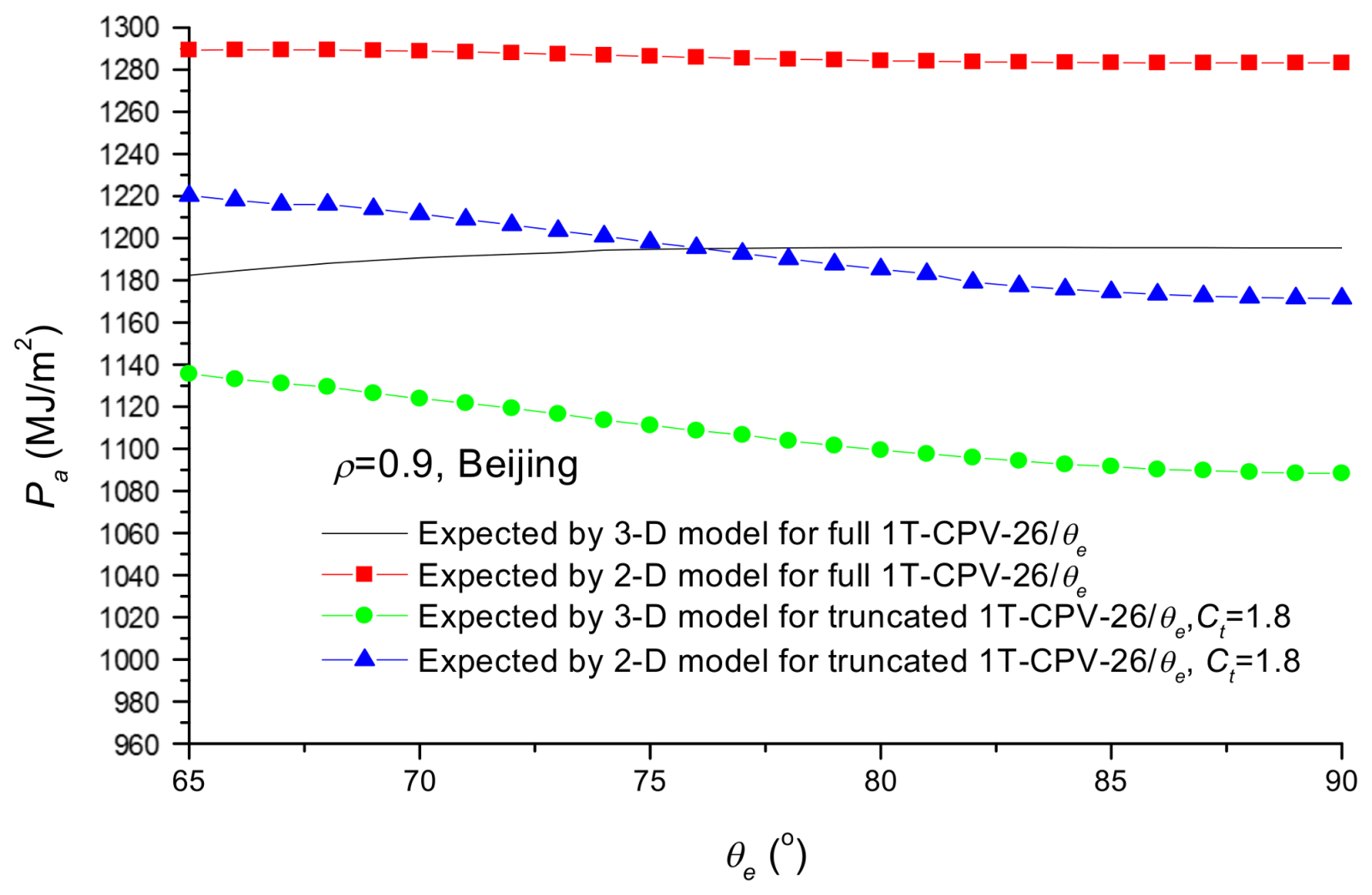
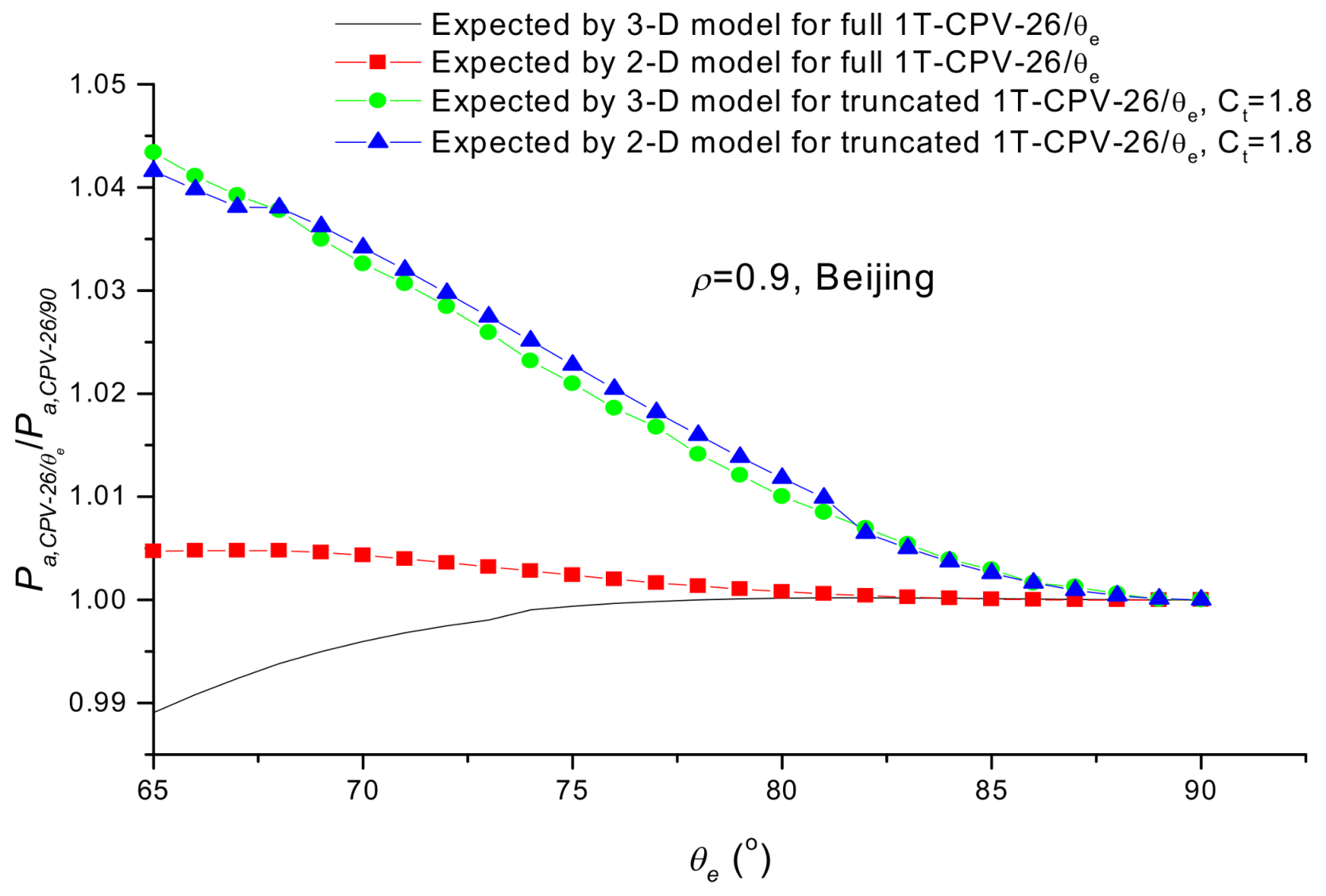
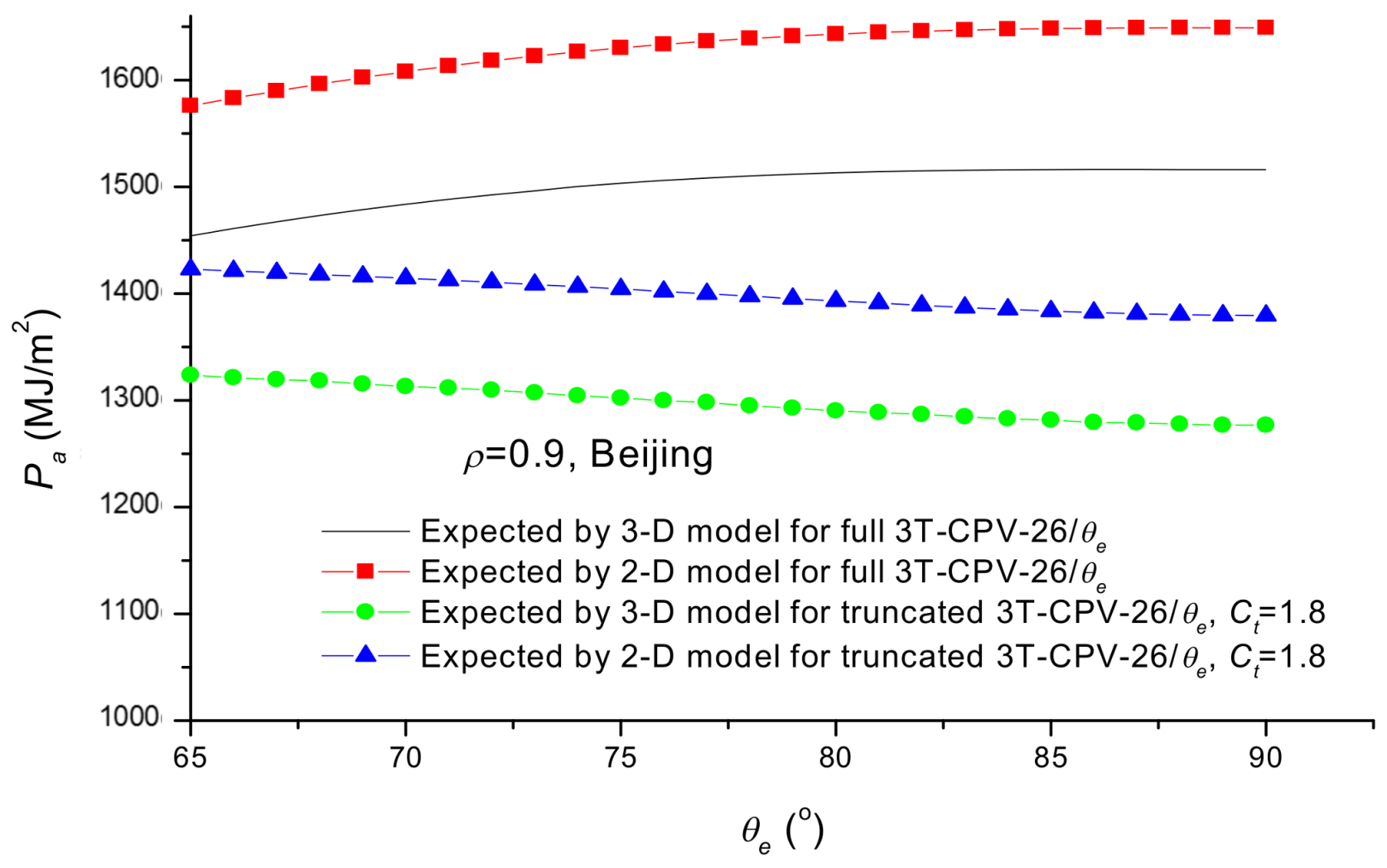
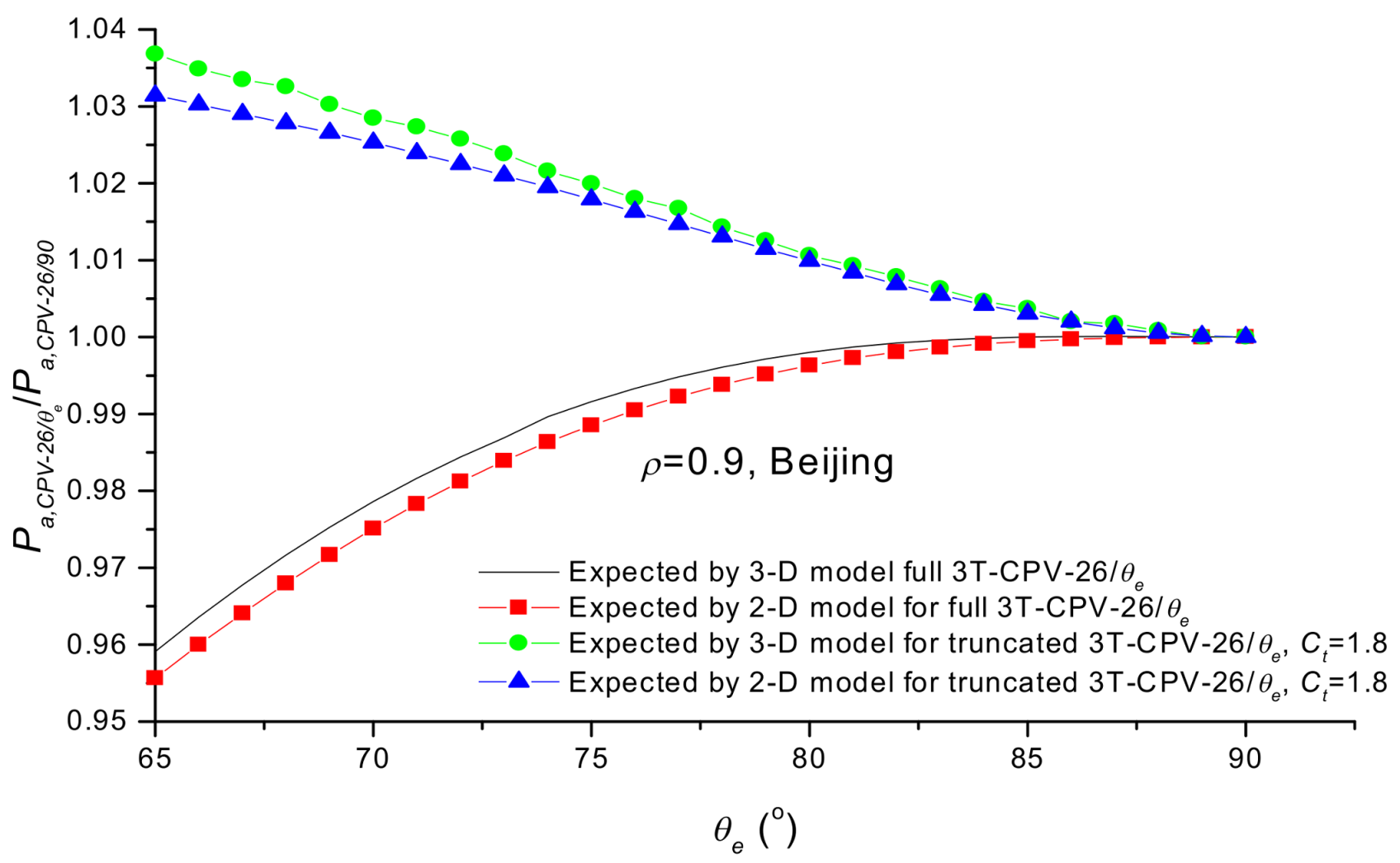
© 2018 by the authors. Licensee MDPI, Basel, Switzerland. This article is an open access article distributed under the terms and conditions of the Creative Commons Attribution (CC BY) license (http://creativecommons.org/licenses/by/4.0/).
Share and Cite
Tang, J.; Yu, Y.; Tang, R. A Three-Dimensional Radiation Transfer Model to Evaluate Performance of Compound Parabolic Concentrator-Based Photovoltaic Systems. Energies 2018, 11, 896. https://doi.org/10.3390/en11040896
Tang J, Yu Y, Tang R. A Three-Dimensional Radiation Transfer Model to Evaluate Performance of Compound Parabolic Concentrator-Based Photovoltaic Systems. Energies. 2018; 11(4):896. https://doi.org/10.3390/en11040896
Chicago/Turabian StyleTang, Jingjing, Yamei Yu, and Runsheng Tang. 2018. "A Three-Dimensional Radiation Transfer Model to Evaluate Performance of Compound Parabolic Concentrator-Based Photovoltaic Systems" Energies 11, no. 4: 896. https://doi.org/10.3390/en11040896
APA StyleTang, J., Yu, Y., & Tang, R. (2018). A Three-Dimensional Radiation Transfer Model to Evaluate Performance of Compound Parabolic Concentrator-Based Photovoltaic Systems. Energies, 11(4), 896. https://doi.org/10.3390/en11040896




